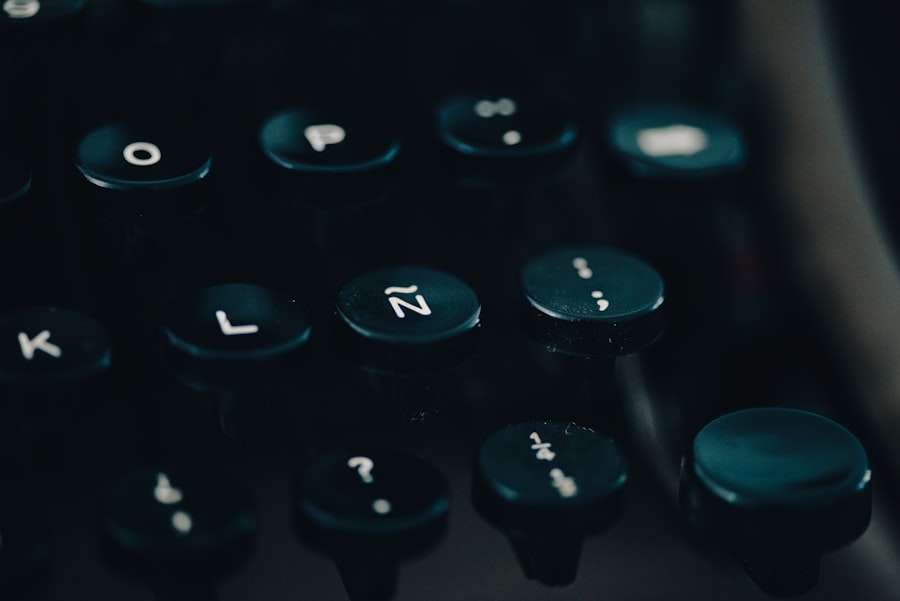As I delve into the world of WordPress, I often encounter a common issue that can be quite frustrating: memory limit errors. These errors typically manifest when the PHP memory allocated to my WordPress site is insufficient to handle the demands of the themes, plugins, or content I am using. When I see messages like “Allowed memory size exhausted,” it serves as a clear indication that my site is trying to use more memory than what has been allocated by the server.
This can lead to various problems, including slow loading times, incomplete page rendering, or even complete site crashes. Understanding the root cause of these memory limit errors is crucial for me as a website owner. The default memory limit set by WordPress is often around 40MB for single sites and 64MB for multisite installations.
However, as I add more plugins or use resource-intensive themes, I may quickly find myself exceeding this limit. It’s essential to recognize that these errors are not just technical glitches; they can significantly impact user experience and site performance. Therefore, addressing them promptly is vital for maintaining a healthy and efficient website.
Key Takeaways
- WordPress memory limit errors can occur when your website exceeds the allocated memory limit.
- You can check your current memory limit by using the phpinfo() function or a WordPress plugin.
- Increasing memory limit in wp-config.php can be done by adding a line of code defining the memory limit.
- To increase memory limit in php.ini, you can edit the file directly or contact your hosting provider for assistance.
- Using a plugin to increase memory limit is a convenient option for those who are not comfortable editing code.
- Troubleshooting common memory limit errors involves identifying and resolving issues such as poorly coded plugins or themes.
- Monitoring memory usage and performance can help you identify potential memory limit issues before they become a problem.
- Seeking professional help for persistent memory limit issues may be necessary if you are unable to resolve the problem on your own.
Checking Your Current Memory Limit
Before I can take any steps to resolve memory limit issues, I need to check my current memory limit settings. This process is relatively straightforward and can be accomplished in several ways. One of the simplest methods I’ve found is to create a PHP file with the following code: ``.
By uploading this file to my WordPress root directory and accessing it through my web browser, I can view detailed information about my PHP configuration, including the memory limit. Alternatively, I can also check the memory limit directly from my WordPress dashboard. By navigating to the Site Health section under Tools, I can find information about my site’s performance and any potential issues, including memory limits.
This built-in feature provides a user-friendly way to assess whether my current settings are adequate for my site’s needs. Knowing my current memory limit allows me to make informed decisions about whether I need to increase it and how much additional memory might be necessary.
Once I’ve determined that my current memory limit is insufficient, the next step is to increase it through the wp-config.php file. This file is a critical component of my WordPress installation, containing essential configuration settings. To make changes, I first access my website’s files via FTP or through the file manager provided by my hosting service.
After locating the wp-config.php file in the root directory, I open it for editing. To increase the memory limit, I add the following line of code just before the line that says “That’s all, stop editing! Happy blogging.” This line typically looks like this: `define(‘WP_MEMORY_LIMIT’, ‘256M’);`.
By setting the memory limit to 256MB, I ensure that my site has ample resources to handle its operations. After saving the changes and re-uploading the file, I refresh my website to see if the error persists. This method is often effective and can resolve many common memory-related issues.
If adjusting the wp-config.php file doesn’t resolve my memory limit issues, I may need to take a deeper dive into my server settings by modifying the php.ini file. This file controls various PHP settings on my server, including memory limits. To access it, I typically connect to my server via FTP or use the file manager provided by my hosting provider.
If I don’t see a php.ini file in my root directory, I may need to create one. Once I have located or created the php.ini file, I look for a line that specifies `memory_limit`. If it’s not present, I can add it myself.
For example, I might include `memory_limit = 256M` to allocate 256MB of memory for PHP processes. After making this change, it’s essential for me to save the file and restart my web server for the changes to take effect. This method can be particularly effective if my hosting environment allows for custom PHP configurations.
Using a Plugin to Increase Memory Limit

For those who prefer a more user-friendly approach or are not comfortable editing code directly, using a plugin to increase the memory limit can be an excellent alternative. There are several plugins available in the WordPress repository designed specifically for this purpose. One popular option is the WP Memory Usage plugin, which not only allows me to increase the memory limit but also provides insights into how much memory my site is using.
After installing and activating the plugin, I can navigate to its settings page and easily adjust the memory limit with just a few clicks. This method eliminates the need for manual code editing and reduces the risk of making mistakes that could potentially break my site. Additionally, many of these plugins offer additional features such as monitoring memory usage over time, which can help me keep track of how changes impact my site’s performance.
Troubleshooting Common Memory Limit Errors
Even after increasing the memory limit, I may still encounter issues related to memory usage. In such cases, troubleshooting becomes essential. One common problem is that certain plugins or themes may be poorly optimized and consume excessive resources.
To identify these culprits, I can deactivate all plugins and switch to a default theme temporarily. If the error disappears, I can reactivate each plugin one by one until I find the one causing the issue. Another approach involves checking for any recent changes made to my site that could have triggered these errors.
For instance, if I’ve recently installed a new plugin or updated an existing one, it might be worth investigating whether that specific change correlates with the onset of memory limit errors. Additionally, reviewing error logs provided by my hosting provider can offer valuable insights into what might be going wrong behind the scenes.
Monitoring Memory Usage and Performance
Once I’ve successfully resolved any immediate memory limit issues, it’s crucial for me to monitor my site’s memory usage regularly. Keeping an eye on how much memory my site consumes helps me anticipate potential problems before they escalate into significant issues. There are various tools available that allow me to track performance metrics over time, including server resource usage and response times.
Using plugins like Query Monitor or New Relic can provide detailed insights into how different components of my site are performing and how much memory they are using. By analyzing this data, I can make informed decisions about optimizing my site further—whether that means removing unnecessary plugins, optimizing images, or even upgrading my hosting plan if needed. Regular monitoring not only helps maintain optimal performance but also enhances user experience on my site.
Seeking Professional Help for Persistent Memory Limit Issues

Despite all efforts to resolve memory limit errors on my own, there may be instances where issues persist beyond my control or expertise. In such cases, seeking professional help becomes a viable option. Many web hosting providers offer support services that include troubleshooting technical issues like memory limits.
By reaching out to their support team, I can gain access to experienced professionals who can diagnose and resolve complex problems efficiently. Additionally, hiring a WordPress developer or consultant can provide tailored solutions specific to my site’s needs. These experts often have extensive experience dealing with similar issues and can implement optimizations that go beyond simple memory adjustments.
While this option may involve additional costs, investing in professional help can save me time and frustration in the long run—ultimately leading to a more stable and high-performing website. In conclusion, understanding and addressing WordPress memory limit errors is essential for maintaining a smooth-running website. By checking current limits, making necessary adjustments through various methods like wp-config.php or php.ini modifications, utilizing plugins for ease of use, troubleshooting common issues, monitoring performance regularly, and seeking professional assistance when needed, I can ensure that my WordPress site remains efficient and user-friendly.
If you’re encountering memory limit errors while working with WordPress, it’s crucial to understand the underlying causes and potential solutions to effectively troubleshoot the issue. A related article that might be of interest is available on the blog section of The Sheryar’s website. This blog offers a wealth of information on various WordPress challenges and solutions, providing insights that can help you address memory limit errors and enhance your website’s performance. For more detailed guidance, you can explore the article by visiting The Sheryar Blog.
FAQs
What is a WordPress memory limit error?
A WordPress memory limit error occurs when the amount of memory allocated to WordPress is not sufficient to perform a specific task, such as installing a plugin or theme, or running a complex operation.
What are the common causes of WordPress memory limit errors?
Common causes of WordPress memory limit errors include running too many plugins, using a poorly coded theme, or trying to perform tasks that require more memory than the default limit set by the hosting provider.
How can I identify a WordPress memory limit error?
You can identify a WordPress memory limit error by encountering error messages such as “Fatal error: Allowed memory size of xxx bytes exhausted” or “Memory exhausted error”.
How can I troubleshoot a WordPress memory limit error?
To troubleshoot a WordPress memory limit error, you can try increasing the memory limit in the wp-config.php file, deactivating plugins and themes to identify the culprit, or contacting your hosting provider for assistance.
How can I increase the memory limit in WordPress?
You can increase the memory limit in WordPress by adding the following line to your wp-config.php file:
define(‘WP_MEMORY_LIMIT’, ‘256M’);
This will increase the memory limit to 256 megabytes, but you can adjust the value as needed.
What should I do if I am unable to resolve a WordPress memory limit error?
If you are unable to resolve a WordPress memory limit error on your own, you should consider reaching out to your hosting provider for assistance. They may be able to adjust the memory limit for you or provide guidance on how to resolve the issue.
